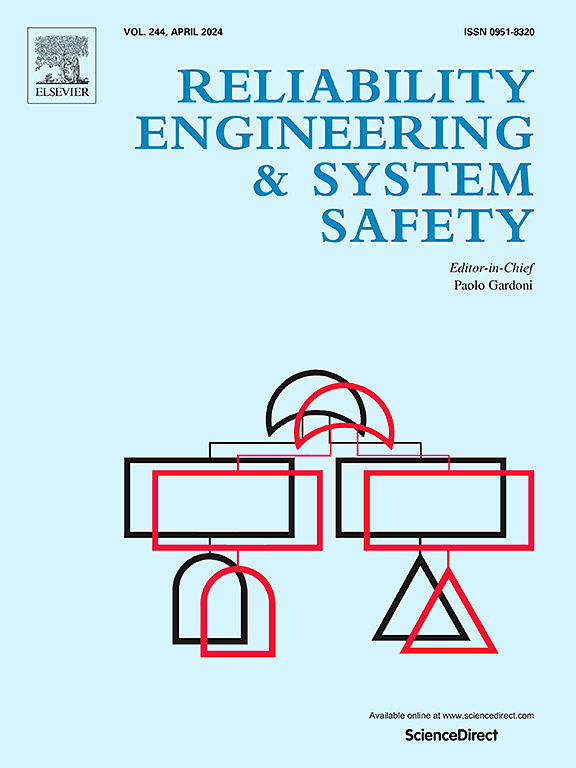Fractional wavelet synchrosqueezed transform for linear chirp signal: theory and damage detection by the electromechanical impedance based nonlinear wave modulation
IF 9.4
1区 工程技术
Q1 ENGINEERING, INDUSTRIAL
引用次数: 0
Abstract
The electromechanical impedance-based nonlinear wave modulation (EMI-NWM) presented in this paper is a novel damage detection technique based on the modulation of chirp signals. The approach deals with the difficult and time-consuming process of selecting the optimal frequency for the pump and carrier waves in the NWM-based structural health monitoring, making it more appropriate for real-time deployment. However, compared to when monoharmonic signals are utilized as excitations, the processing of the EMI-NWM recorded signals is more challenging. Time-frequency signal processing can assist in this regard, but some of the existing methods do not offer sufficient resolution to analyze EMI-NWM signals effectively. The fractional wavelet synchrosqueezed transform (FrWSST), an innovative time-frequency analysis approach that combines the advantages of fractional wavelet and synchrosqueezed transforms, is developed to address the issue. FrWSST parameters are tuned for linear chirp signals such as those used in EMI-NWM. EMI-NWM along with FrWSST is used to detect bolt loosening in sandwich beams. The proposed method's resistance to external noise and its effectiveness in damage identification is being examined. The results show that FrWSST is at least twofold more robust to noise than other time-frequency methods, making it a promising technique for real-world applications.
线性啁啾信号的分数阶小波同步压缩变换:理论与基于机电阻抗的非线性波调制损伤检测
本文提出的基于机电阻抗的非线性波调制(EMI-NWM)是一种基于啁啾信号调制的新型损伤检测技术。该方法解决了在基于nwm的结构健康监测中为泵浦和载波选择最佳频率的困难和耗时的过程,使其更适合于实时部署。然而,与单谐波信号作为激励相比,EMI-NWM记录信号的处理更具挑战性。时频信号处理可以在这方面提供帮助,但现有的一些方法不能提供足够的分辨率来有效地分析EMI-NWM信号。分数小波同步压缩变换(FrWSST)是一种结合分数小波和同步压缩变换优点的创新时频分析方法。对于线性啁啾信号(如EMI-NWM中使用的信号),FrWSST参数进行了调谐。采用EMI-NWM和FrWSST对夹层梁螺栓松动进行检测。研究了该方法对外部噪声的抵抗能力和损伤识别的有效性。结果表明,FrWSST对噪声的鲁棒性至少是其他时频方法的两倍,使其成为一种有前途的实际应用技术。
本文章由计算机程序翻译,如有差异,请以英文原文为准。
求助全文
约1分钟内获得全文
求助全文
来源期刊

Reliability Engineering & System Safety
管理科学-工程:工业
CiteScore
15.20
自引率
39.50%
发文量
621
审稿时长
67 days
期刊介绍:
Elsevier publishes Reliability Engineering & System Safety in association with the European Safety and Reliability Association and the Safety Engineering and Risk Analysis Division. The international journal is devoted to developing and applying methods to enhance the safety and reliability of complex technological systems, like nuclear power plants, chemical plants, hazardous waste facilities, space systems, offshore and maritime systems, transportation systems, constructed infrastructure, and manufacturing plants. The journal normally publishes only articles that involve the analysis of substantive problems related to the reliability of complex systems or present techniques and/or theoretical results that have a discernable relationship to the solution of such problems. An important aim is to balance academic material and practical applications.
 求助内容:
求助内容: 应助结果提醒方式:
应助结果提醒方式:


